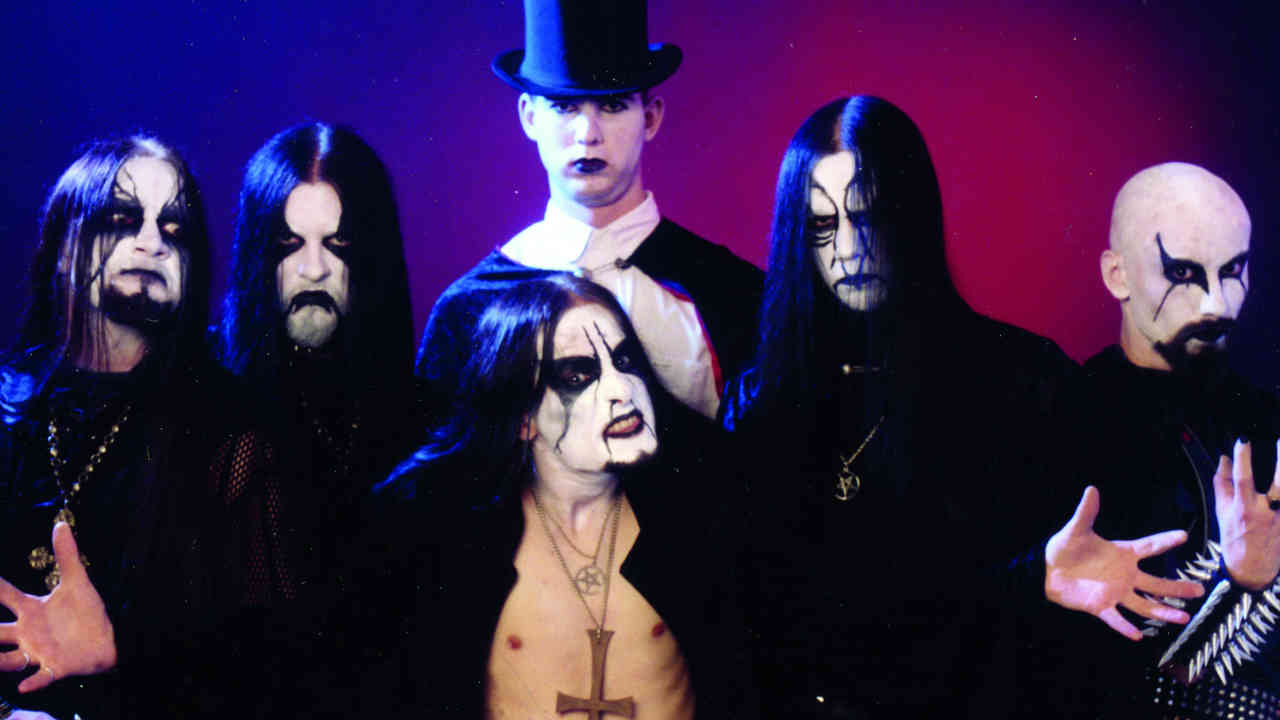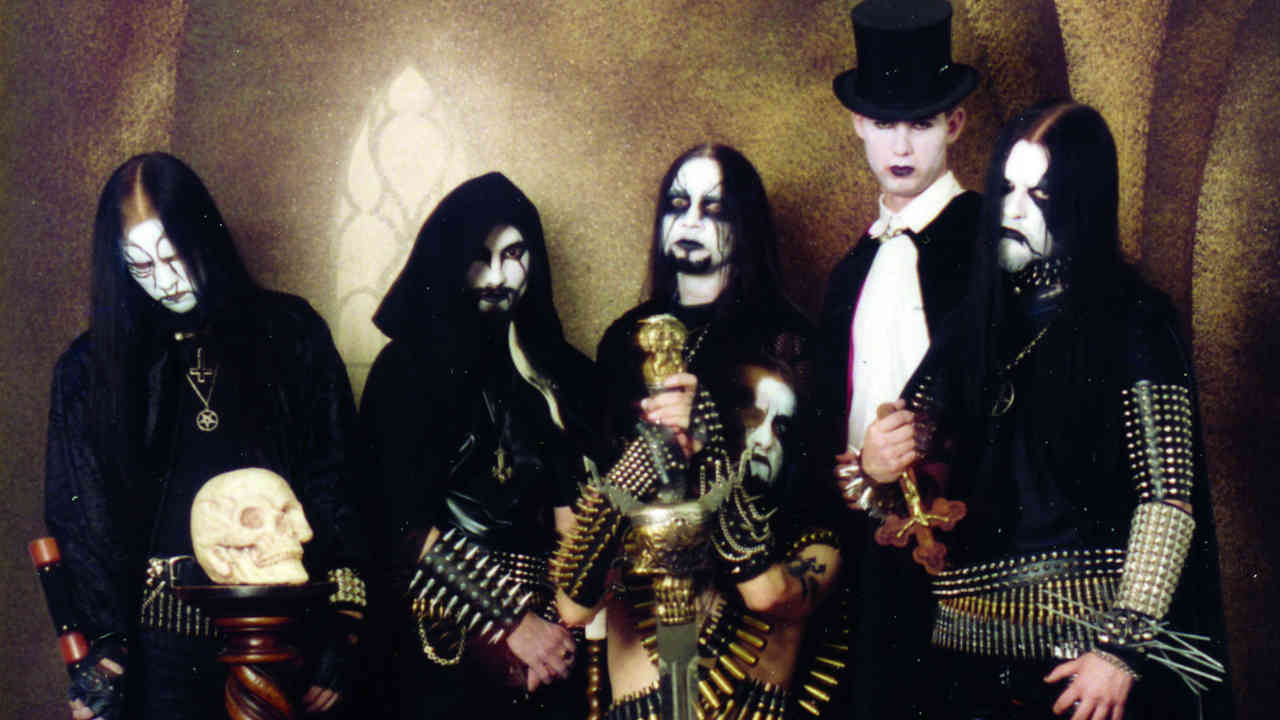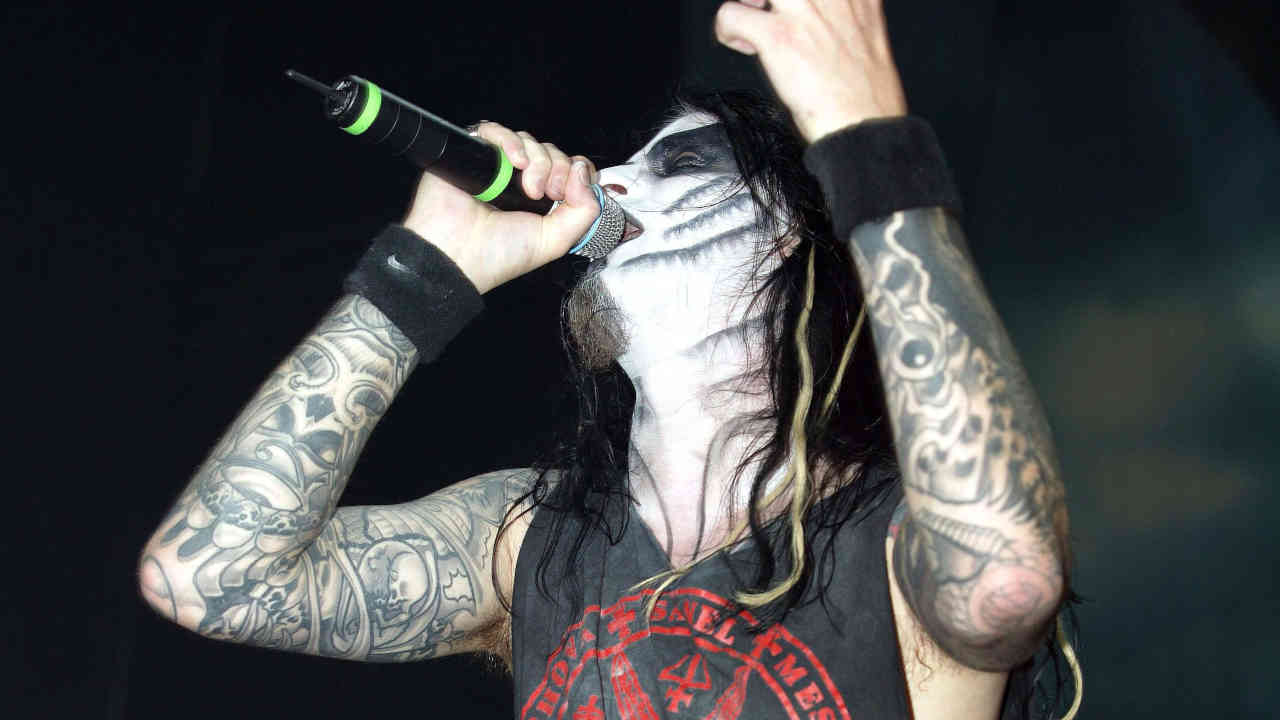
Alongside Cradle Of Filth, Norway’s Dimmu Borgir helped push black metal into a bold new era. Their third album, 1997’s Enthrone Darkness Triumphant, hitched the genre’s feral snarl to a dramatic new approach, helping draw up the blueprint for symphonic black metal. In 2008, frontman Shagrath and guitarist Silenoz looked back on the making of that landmark record.
The mid to late 90s was a transitional period for black metal. The media frenzy that had surrounded the church burnings and murder of Mayhem guitarist Euronymous by Burzom’s Vary Vikernes which had given the scene wider notoriety had fizzled out, and the genre found itself caught between holding onto its original, unyielding gospel and following the path of musical experimentation.
1997 was a pivotal year. The likes of Enslaved, Emperor, Arcturus and Sigh all put out albums that stretched the possibilities of black metal, although if you were looking for possible signposts for its future at that time, that year’s Dynamo festival in Eindhoven, Holland was a good place to start. Cradle Of Filth, riding on the critical and (relative) commercial success of 1996’s Dusk… And Her Embrace, were playing the main stage, alongside the likes of Marilyn Manson, Machine Head and Korn.
But playing on the second stage, given over for one day to black metal acts, were two bands from Oslo who would go on to blow apart the notion that native black metal was a purely underground movement with no hope of commercial success or recognition. One was Satyricon, whose 1999 album, Rebel Extravaganza, would bring a new, industrialised sensibility to black metal; the other, seen by some as Cradle’s arch rivals, were about to become the best-selling black metal band of all time: Dimmu Borgir.
Dimmu were due to release their third album, Enthrone Darkness Triumphant, but no one who saw them play at Dynamo were given much idea of what to expect, seeing as their keyboard player at the time, Stian Aarstad, had failed to arrive due to sickness. The band had, however, already made plans to step up from the underground, moving over from the British-based Cacophonous Records – who had put out Cradle’s 1994 debut, The Principle Of Evil Made Flesh – to German behemoths Nuclear Blast, and opting to record in Hypocrisy frontman Peter Tägtren’s Abyss Studio in Sweden, a fairly new operation at the time, but with a growing reputation for its sharp, super-professional sound.
“We knew we would get flamed for signing to Nuclear Blast,” admits guitarist Silenoz, “but Dissection were on there along with a few other really good bands, so we thought, ‘Why can’t we?’ We still had that underground mentality, but once we started Enthrone…, things just opened up and we knew that we just couldn’t go ahead with that kind of behaviour anymore.”
“We always wanted to take the music to the next level,” says frontman Shagrath, “and we had so many problems with labels on the first two albums. It was such underground stuff and we just thought we had something more to give.”

Nuclear Blast had already been distributing Dimmu’s 1996 album, Stormblåst, when Shagrath and Silenoz contacted label founder Markus Staiger to discuss a closer collaboration.
“The set-up was so professional,” recalls Silenoz. “We wanted to take the band to the next level, with a good label and good distribution, so that’s why we approached them in the first place.”
It was also the band’s idea to record the next album at Abyss. As Shagrath remembers, “The reason we went to Peter in the first place is that we heard the Dark Funeral album, The Secrets Of The Black Arts, and we thought, ‘Fuck, this is a killer album and a killer production.’”
“We wanted to do something that gave our material justice,” Silenoz continues. “The sound on the Stormblåst album didn’t come close to what we wanted. Peter had only recorded three albums there at the time, so it was a gamble, but then we’ve always been taking gambles. Sometimes you do right and sometimes you do wrong. This one I think we did right.”
The result was both a huge evolutionary leap not just for the band, then still seen in the symphonic shadows of Cradle and Emperor, but for black metal as a whole, and it caused a storm of debate. The first sign that, this time around, Dimmu meant business, was the cover art. Gone was the ornate, art-nouveau-gone-necro logo of yore, replaced by sharp, no-nonsense lettering, and rather than a vague, environmental setting, what stared out at you was the figure of a priest from some arcane order, still swathed in mystery, but now also much more direct.
Where Stormblåst and Dimmu’s 1994 debut, For All Tid had been beset by flat, weak productions, Enthrone Darkness Triumphant was steeped in spacious grandeur from its very first moment. The rich, ominous strings leading into opener Mourning Palace gave rise to venomous, authoritative vocals, no longer the feral, gnashing scrabble of yore but rather a towering, apocalyptic sermon (this was also their first album with English lyrics) amid giant keyboard cadences that had outgrown their earlier, neo-classical leanings, and arrangements given room to unfurl in splendidly imperious style. This was black metal stepping out of the shadows and into new realms of expansive clarity. From the parping rush and spiralling-off-the-tundra keyboards rampaging through Spellbound (By The Devil), with its cavernous refrain, to the cinematic battle cry of In Death’s Embrace and the careering, swirling velocity of Tormentor Of Christian Souls, Enthrone Darkness Triumphant redefined symphonic black metal on Dimmu’s own terms, its sweeping majesty bringing in a level of ambition that had never been part of black metal’s psychological make-up.
“That album was when we truly shaped the actual sound of Dimmu,” says Shagrath, “because on the two previous albums I don’t think we communicated that much. Before we wrote all our parts individually, but this time around we wrote all the parts together. I think using keyboards the way we did, we didn’t feel like we had to do things within limits, and we still don’t think that’s good for a band. We opened up a new territory and used the keyboards as a way of writing songs, like people use a piano to write songs and then they finish it. It made the sound bigger, and it wasn’t as tunnel vision as it was on the first two albums. We felt we were working on something more unique.”
Peter Tägtren, however, needed some initial convincing. “He was very suspicious about us at first,” Shagrath remembers. “He’d heard Stormblåst and he thought, ‘Do they want me to record it like this?’, and once we started working on the album together, he was like, ‘Fuck yeah, this will be amazing.’ In the recording sessions, everything went so smoothly, there were no complications.”
“Peter still uses it as a reference when he records other bands,” laughs Silenoz. “After that, so many people went to Abyss to record their albums!”
If Dimmu needed any reassurance that they were on the right track, they got all that and more when Markus Staiger heard the first output from his new signings.
“I remember it like it was yesterday,” enthuses the label boss. “The first track I heard was A Succubus In Rapture, which is the mellowest song on the album, but I knew: this album will be massive. Then I got the final album and I just could not believe it! It electrified me through my whole body. I said to myself, ‘I don’t know how much we can sell of this album, but let’s do everything to make this as big as possible.”
“Yeah, he was very surprised when he heard the new tracks for the first time,” Shagrath laughs. “He totally freaked out. He threw stuff around in his office and just went totally crazy. Markus was so into the album that he pushed it much more than some of the other bands on the label. When you have your label boss as one of your biggest fans, then it helps a lot.”
Enthrone… proved to be the band’s major breakthrough, catapulting them from a cult act into standard bearers for a genre many felt was too insular to get any mental foothold on. The album’s ornate, visceral immediacy was impossible to ignore, and where Stormblåst sold 20,000 copies, its successor leapfrogged Markus’s projection of 50,000 and ended up selling a previously unheard of figure in the region of 300,000. Of course, not everyone in Dimmu’s circle was happy for them. Black metal never aspired to mass market acceptance…

“There were a lot of bad vibes with some of the local bands in Oslo saying it was crap,” notes Shagrath, “but we got so much response from people all around the world, and that’s when we started to tour a lot more and get attention from people.”
An undoubted turning point in the band’s fortunes, many have now come to regard Enthrone Darkness Triumphant as the band’s masterpiece. Dimmu are a little more ambivalent about it in retrospect, if only because they’re always looking ahead.
“I understand why people think it’s our masterpiece,” says Silenoz. “They heard that first, and it’s natural that what you hear first from a band is going to stick in your mind. It has a lot of different, dark emotions. You have sadness, catchiness – every song represents part of the future sound of Dimmu.”
After the release of Enthrone…, Dimmu further split opinion among black metal fans, growing more monstrous with every release. Having brought in Mustis on keyboards, Shagrath enlisted the mega-lunged talents of ICS Vortex as guest vocalist on Enthrone…’s follow-up, Spiritual Black Dimensions, turned both the threatricality and tempo up and blew yet more minds. 2001’s Puritanical Euphoric Misanthropia, packaged resplendently with a naked torso wrapped in barbed wire, saw yet more line-up changes, with Galder brought in on guitar alongside former Cradle drummer Nick Barker, while Fredrik Nordstrom took over from Peter Tägtren on knob-twiddling duties.
The most notable change, though, was the introduction of a full orchestra, bringing a new level of bombast that set them up for what remains their most successful album to date. Death Cult Armageddon not only broke them on MTV, its flagship track, Progenies Of The Great Apocalypse ended up on the soundtrack to the Hellboy movie. By this point, Dimmu were in a black metal league of one, well on their way to breaking America with the rougher-edged 2007 album, In Sorte Diaboli blowing yet another tempest into to their sails.
Originally published in Metal Hammer issue 189







